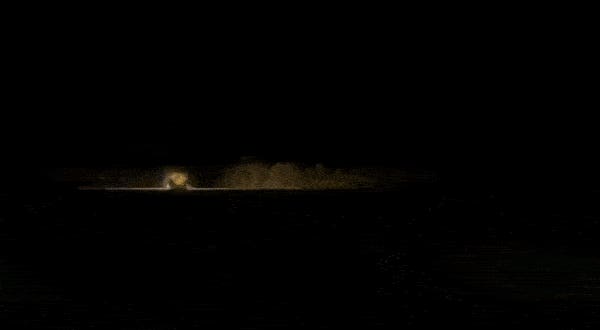Ukrainian defense ministry capture
One day after The New York Times broke the news that President Joe Biden had authorized Ukraine to fire American-made Army Tactical Missile Systems rockets at targets inside Russia, a Ukrainian army battery flung eight of the 3,700-pound, precision-guided rockets at a sprawling Russian munitions depot in Bryansk Oblast, 60 miles from the Russia-Ukraine border.
The Russian Ministry of Foreign Affairs claimed local air defenses shot down five of the GPS-guided rockets, each of which packs nearly 1,000 grenade-sized bomblets. But a video of the Bryansk arsenal that circulated online Tuesday morning depicts a raging fire—evidence of significant damage from the rain of bomblets.
Now that it’s authorized to fire its best American-made munitions at targets on Russian soil, “Ukraine might inflict much more damage,” according to Tatarigami, the founder of the Ukrainian analysis group Frontelligence Insight. But there are significant constraints.
First, the White House reportedly is allowing strikes strictly in and around Kursk Oblast in western Russia, where an approximately 20,000-strong Ukrainian force is defending a 250-square-mile salient against a Russian-led corps with more than 50,000 Russian and North Korean troops. The target of the Tuesday ATACMS raid, the 67th Main Missile and Artillery Directorate Arsenal, is just west of Kursk.
Second, there probably aren’t many of the 190-mile-range ATACMS left in the Ukrainian inventory. It’s possible there have been just two shipments of the 1990s-vintage rockets: one in late 2023 and another in March. Combined, the two shipments may have included fewer than 50 ATACMS. Over the past year, the Ukrainian army has conducted at least eight ATACMS raids. Most of the raids involved more than one missile.
Those first two consignments of ATACMS might be running low. The Biden administration still has authority to transfer billions of dollars worth of surplus American weaponry to Ukraine, and has pledged to exhaust this authority before President-elect Donald Trump—who has spoken out against further aid to Ukraine—takes office in late January.
Those billions of dollars could cover the cost of replacing a lot of ATACMS, each of which was priced around $1 million at the time of manufacture.
But the U.S. Army is keen to maintain its own inventory of ATACMS—currently numbering in the hundreds—until the new Precision Strike Missile, a high-tech ATACMS replacement, is widely available. As recently as 2021, the Army randomly tested some of its oldest ATACMS, dating from the early 1990s, to ensure their rocket motors and other components still worked.
Given the paucity of the supply, Kyiv could save its ATACMS for the most valuable targets, the destruction of which might have a cascading effect on Russian capabilities. “The concentrated use of long-range weapons can inflict disproportionate damage against selected targets, thereby opening up exploitable opportunities in Russia’s defenses,” explained Jack Watling, an analyst for the Royal United Services Institute in London.
The bombardment of that munitions arsenal in Bryansk is probably a good example of an effective ATACMS raid. Burning down the arsenal could throttle the supply of ammunition to Russian and North Korean troops in Kursk—and create a firepower gap in that sector. “The question is whether the Ukrainian military is capable of exploiting the gap created,” Watling wrote.
Don’t expect a veritable thunderstorm of ATACMS now that Ukraine is allowed to fire the rockets more widely. Do expect rocket attacks on critical targets such as supply depots and air bases in and around Kursk over the coming weeks.
By late January, two things are possible or even likely. Ukraine might run out of ATACMS, and the new Trump administration might decrease or even end U.S. aid to Ukraine while also rescinding permission for the Ukrainians to use American-made weaponry on targets in Russia.
That wouldn’t mean the end of Ukrainian deep strikes. Kyiv has been developing its own strike munitions—including cruise and ballistic missiles and drones—and can deploy them without first asking permission. “We will use them all,” Ukrainian Pres. Volodymyr Zelensky said.
But the ATACMS are uniquely effective, if few in number. Ukraine should enjoy a brief and highly destructive ATACMS season before the missiles are all gone, the politics of the war change and Ukrainian forces must rely more on locally-made munitions.
Follow me on Twitter. Check out my website or some of my other work here. Send me a secure tip.















